Most visitors to Halkidiki head for the golden beaches of Kassandra; others prefer the wild landscapes of Sithonia or the tranquility of the region’s mountain villages; and others still seek spiritual inspiration in the masterpieces of Byzantine art on Mount Athos. Our weekend, however, is focused on the heady aromas and flavors of Halkidiki’s wines and on exploring its wine routes.
STARTING OFF
Our journey begins in Epanomi, a seaside resort favored by the denizens of nearby Thessaloniki who pop over on weekends to windsurf when the winds are favorable or to watch the birds in the wetlands or to while away an afternoon nibbling on meze at one of its many tavernas. Another must in the region, however, is the Ktima Gerovassiliou winery. The soil here is sandy and rich in marine fossils, as this hilly landscape was formed by sediment from the sea. The climate is Mediterranean, with mild winters and hot summers. The sea of vines planted in this fertile ground consists of two Greek white varieties: Assyrtiko, possibly the most remarkable variety of the Mediterranean, and Malagousia, a grape that was brought back after years of neglect. You’ll also find native reds Limnio, Mavroudi and Mavrotragano, as well as the popular French varieties Sauvignon Blanc, Chardonnay, Viognier, Syrah, Merlot and Grenache Rouge. The cool breeze that comes in from the sea helps the grapes reach full maturity so that they yield both wonderful whites with intense notes of fruit and soft yet robust reds that perform beautifully with aging. These are regarded as “new-generation” wines and have a Protected Geographical Indication (PGI Epanomi). After sampling a few of the winery’s top labels, we head further into Halkidiki.
“The cool breeze that comes in from the sea helps the grapes reach full maturity so that they yield both wonderful whites with intense notes of fruit and soft yet robust reds that perform beautifully with aging.”
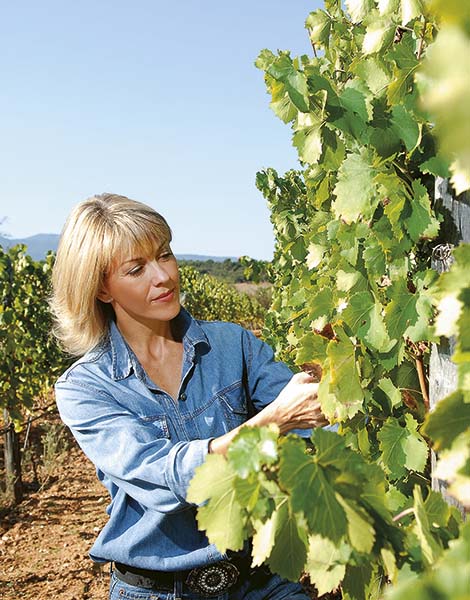
© Heinz Troll
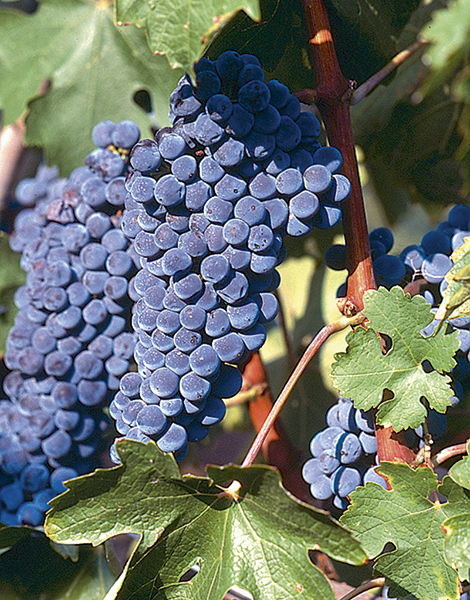
CENTRAL HALKIDIKI
Our journey continues to Aghios Pavlos. Along the way, we see more and more vineyards on both sides of the main road; they stretch across low, rolling hills that are cooled during the hot summer months by their proximity to the sea. The main varieties grown here are the white Roditis and Sauvignon Blanc, used to produce the fruity and vibrant PGI Halkidiki. Another PGI, a soft red, is made with a blend of Xinomavro, Grenache Rouge and Cabernet Sauvignon. A huge sign at the entrance tells us that we’ve reached the Tsantali winery.
A large facility, it is the main production unit of the company’s operations in Northern Greece and is surrounded by its own vineyards. On the guided tour, we learn that Halkidiki produced renowned wines in antiquity. Sources dating back to the 5th century BC refer to a dry white and a medium-sweet from Mendi, a small town on the southwest coast of Kassandra. Ancient Acanthus (present-day Ierissos) and Aphytis (Afytos) were also known for their wines, while Stagira was home to the region’s first developed vineyard, planted by Aristotle. Today, Halkidiki’s vineyards are spread in Sithonia, Mount Athos and the central part of the peninsula.
“Today, Halkidiki’s vineyards are spread in Sithonia, Mount Athos and the central part of the peninsula.”
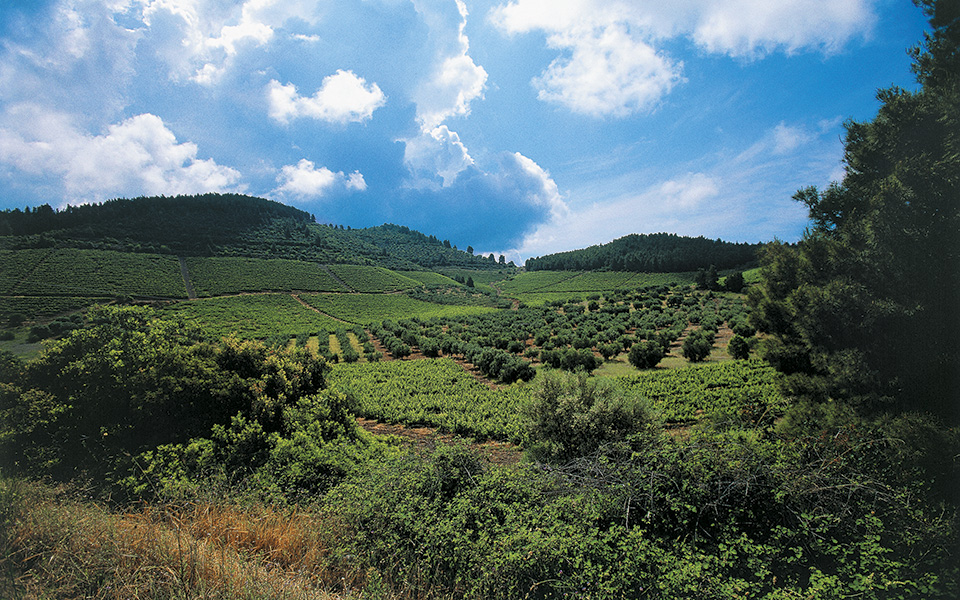
ON TO SITHONIA
It is early afternoon and we’re back on the road. At the Moudiana junction, we follow the signposts for Sithonia, and proceed along its western coast, taking in the stunning views of rolling hills, lush with olive trees, pines, beeches, cypresses and planes. Looking at the scenery, bathed in sunlight, we can’t help but recall the poems of Angelos Sikelianos, Odysseas Elytis and Nikos Gatsos paying homage to the Greek summers. Eventyally we reach Porto Carras.
This is where Halkidiki’s modern identity as a wine region was first forged in the 1960s, by Yiannis Carras, a businessman enchanted by the natural beauty of the area, who envisioned a luxurious tourism complex surrounded by working vineyards. He went on to plant Greece’s single biggest vineyard, 400 hectares on the sun-kissed western foothills of Mount Meliton. Today, the vineyard grows 15 varieties and applies organic farming methods. The climate is generally dry and hot; however, proximity to the sea and the neighboring pine forest help mitigate the effects of high temperatures, particularly during the warmest part of the day in summer.
The soil is also rich in limestone, which has a natural capacity for retaining humidity, so the overall conditions are ideal for the production of excellent wines. Among these stand-outs are the complex and fleshy PDO Playies Melitona reds, made from Limnio, Cabernet Franc and Cebernet Sauvignon. It is worth noting that this is the first Greek wine with Protected Designation of Origin that included non-Greek varieties in its composition. The PDO Playies Melitona whites, made from an interesting combination of three native varieties (Athiri, Assyrtiko and Roditis), are also successful.
“The soil is also rich in limestone, which has a natural capacity for retaining humidity, so the overall conditions are ideal for the production of excellent wines.”
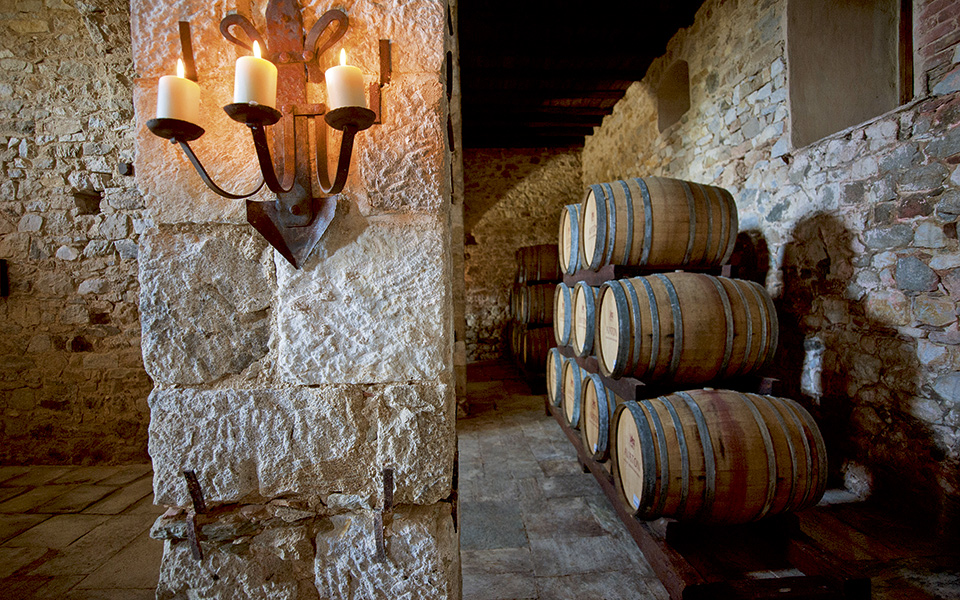
© Alexandros Avramidis
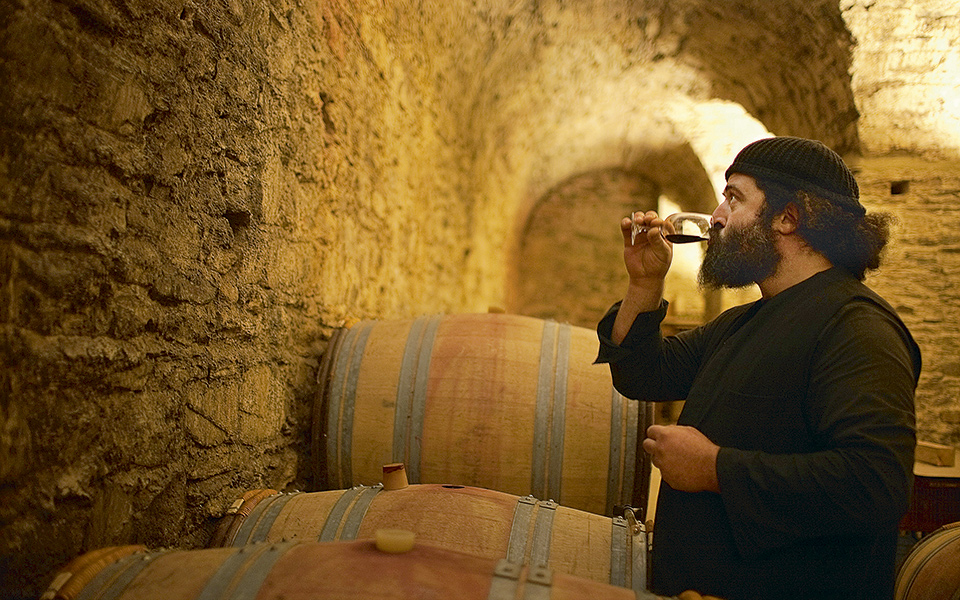
© Corbis/Smart Magna
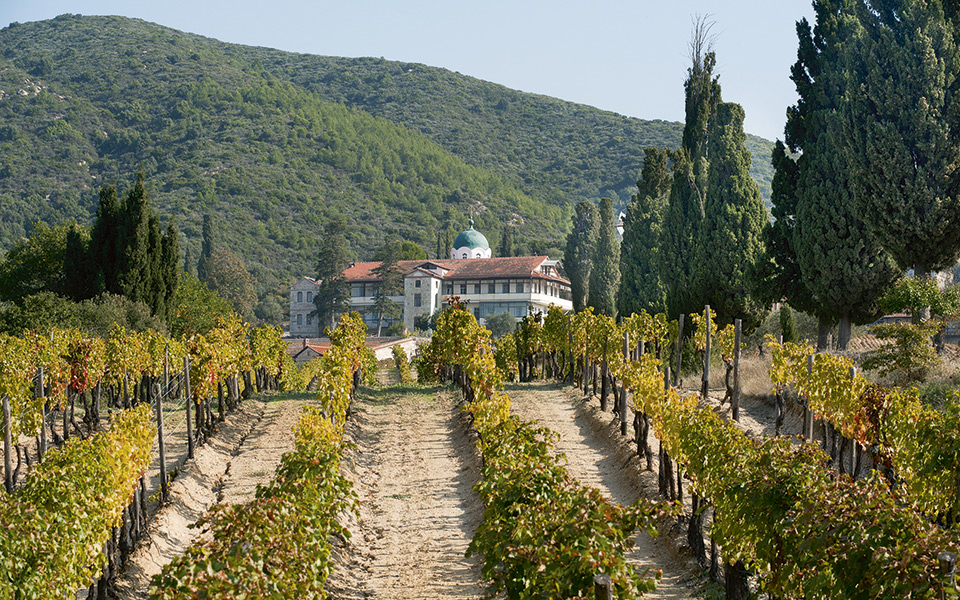
© Alexandros Avramidis
MOUNT ATHOS
The following morning, with a full day set aside for the world-famous monastic community, we head to Ouranoupoli. Alas, only the men are allowed to venture up to the “Garden of the Virgin.” Almost all of the monasteries in this unique Eastern Orthodox community have a lengthy tradition in winemaking. In fact, the entire 15th chapter of Typikon, the first known charter setting down the rules of the community’s operation (drafted in 972 by Emperor Ioannis Tsimiskis and high-ranking monks) is dedicated to the business of wine commerce. Wine was the community’s key commodity in the centuries that followed, and today a number of monasteries are reviving that age-old tradition. The climate here is typically Mediterranean, with mild winters, plenty of sunshine in the spring and summer, and cool sea breezes tempering the effects of the hot summer sun.
Most of the monastery vineyards are arranged in terraces, at altitudes ranging from 50m to 400m. The vineyards on the east of the peninsula face the sea, while those on the west look up to Mount Olympus. They are planted in rows so as to allow the use of machinery but, as has always been the tradition, they are not irrigated. From the large range of varieties grown – Roditis, Athiri, Assyrtiko, Sauvignon Blanc, Limnio, Xinomavro, Cabernet Sauvignon and Grenache Rouge – the monks produce wines labeled as PGI Mount Athos, one of the first Protected Geographical Indications to be instituted in Greece, granted in 1981. As the men return from the Monastery, we come to the end of our Dionysian weekend in Halkidiki and are more than ready for a seafood feast at one of Ouranoupoli’s seaside tavernas – where the women are also allowed to indulge.
ABOUT THE AUTHOR | Maria Netsika is a chemist and oenologist, as well as founder of Wine Plus, a wine communication company organizing the annual “Map of Flavors” fair, running the THESSALONIKI’96 Wine Club and the Wine Plus magazine and website.
“The vineyards on the east of the peninsula face the sea, while those on the west look up to Mount Olympus. ”











